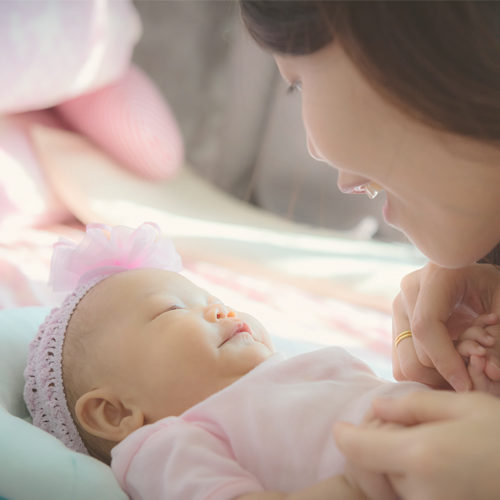Most of a child’s brain develops before kindergarten

Early childhood is a period of tremendous brain development because about 90% of Your Child’s brain development occurs during the first five years of life.
Brain growth in the first five years
At birth, an average baby’s brain is around 25% of the size of an average adult’s brain. And amazingly, it doubles in size by the first birthday and continues to grow, getting to about 80% of adult size by age three and up to 90% by the time the baby celebrates the fifth birthday.
Stages in brain development
Like other organs in the body, the brain starts forming when the baby is still in the womb and continues to grow after birth. So, we can classify the stages of brain development as before and after birth.
Before birth
The formation of the brain and nervous system starts in the third week of pregnancy when the embryo begins to develop a structure called the neural plate. This structure provides a basis for the formation of all neurons (nerve cells) that form the brain and the spinal cord.
After birth
The amount of neurons in the brain is highest at birth, which is about 100 billion. But, despite having the same number of brain cells as an adult, a newborn’s brain is just about a quarter of the adult size. So, the increase in brain size after birth is not from developing new brain cells but from increasing neuronal connections (synapses).
There are about 50 trillion synapses in a baby’s brain, whereas an adult brain has over 500 trillion synapses. It is the nature and level of neuronal connectivity that determines how well a brain has developed, which, in turn, determines how a child thinks and behaves.
Brain development in early childhood
After birth, most brain development occurs during early childhood — before kindergarten — and the process involves creating neural connections. The brain makes about 1 million connections per second in the first three years, more than at any other time in life. These are primarily simple synapses made in response to stimuli from the environment.
During early childhood, different regions of the brain are highly sensitive to life experiences. That is why it’s called the critical period. At this time, the synaptic connections are more flexible and malleable (plastic). The experiences a child gets from the environment influence how these connections are formed. After the critical period, the synapses become stabilized and a lot less plastic.
How to support your child’s brain development
You can influence your child’s brain development through interaction and experiences because any young brain develops in response to everything encountered in the early years of life.
Several studies have shown that a supportive environment reduces the risk of children experiencing developmental delays. On the flipside, neglect, abuse, excessive screen time, and poor interactions can negatively impact a child’s early brain development, and subsequently, their long-term success.
What can parents do?
The best gift you can offer a child is love, care, and attention. All healthy children always try to interact with their parents by smiling, babbling, or crying (which researchers call “the serve”), and they expect them to respond by smiling, talking, singing, or even feeding them (“the return”). This mental tennis of serve and return is key to creating neural connections.
Verified:
Ketsupa Jirakarn (Mental health specialist) (31 March 2021)



